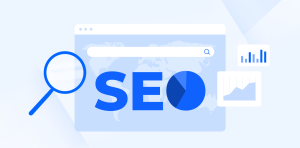A High-Level Look at the Details of Lead Generation Marketing

- They can get too “big picture” about what they are doing, spending most of their time discussing grandiose ideas while not paying enough attention to the details.
- They can get too bogged down in the technical execution of a campaign and lose sight of their objectives — for example, they have slick online lead tracking but no leads to track.
To get the best results, companies must see the big picture and the little picture on lead generation marketing, and it’s not an easy thing to do. For that reason, Straight North, a PPC management services agency, created the infographic you see below, the Lead Generation Ecosystem. Initially, it was used internally as a training tool. It proved to be very useful, so we polished it and are making it available to the public, to help small, medium and even large organizations identify problems and areas of opportunity in their lead generation efforts.
A few areas you may want to consider in particular:
- Are you using all the appropriate content options on your website? Today’s average website visitor is visual, thanks to the habitual use of mobile devices for work and entertainment, among other things. Using textual content only on a lead generation website may be fast and inexpensive, but without visual content, lead generation will sputter at best. A simple and effective place to start is with product/service photography. High-resolution images that capture important features and benefits are very persuasive and are almost impossible for visitors to overlook, especially when you reinforce the images with high-impact captions. Text? Study after study shows that headlines and subheads are often read, but body text — not so much.
- Are you doing lead validation — that is, separating sales leads from other types of conversions? Most companies with lead generation websites don’t even know what lead validation is — let alone how important it is. Lead validation is a manual process that involves separating true sales leads from other types of conversions, by reading form submissions and listening to recordings of phone inquiries. Extensive studies done by our agency, involving hundreds of thousands of conversions, indicate that about half a website’s conversions are not sales leads, but instead spam, misdials, customer service inquiries, sales solicitations and much more. Failing to separate leads from non-leads causes marketing campaign managers to misinterpret data and make bad decisions when testing and optimizing campaigns. These bad decisions can be so severe that they make campaigns less effective rather than more effective.
- Are you putting data from non-leads into your CRM for future marketing efforts (when appropriate)? A strong house list of prospects is a valuable asset for any company. Your house list is made much stronger by giving careful consideration to those non-lead conversions that come out of your lead validation process (see bullet point above). The fact is, many non-leads that come through a website have the potential of being outstanding leads down the road. For instance, suppose a CEO of a middle-market firm inquiries about a service your company doesn’t provide. Wouldn’t it be wise to keep that CEO’s email on file, for future marketing efforts? The day may come as early as tomorrow when the company is in the market for your most important product. When companies throw away non-lead data, it can truly be said they are throwing away money.






